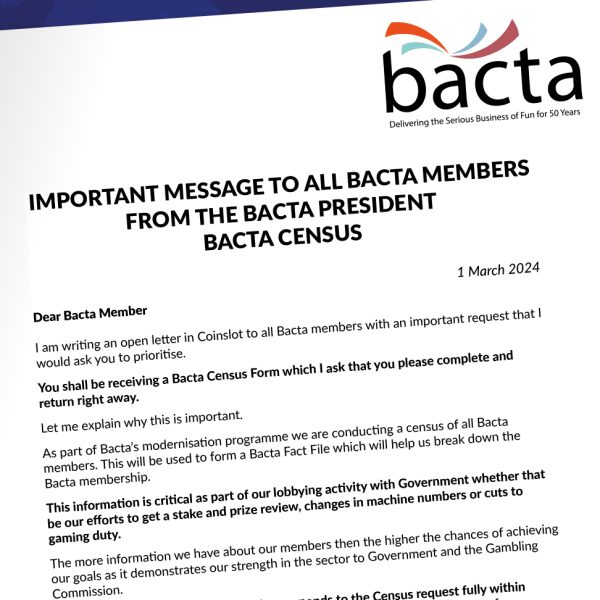27th March 2020
Furloughed workers – Guidance for employers on the coronavirus (COVID-19) Job Retention Scheme.
Dear Member
As you know, the guidance for employers on the COVID-19 Job Retention Scheme is out. Please see the link below for details:
https://www.gov.uk/guidance/claim-for-wage-costs-through-the-coronavirus-job-retention-scheme
Please see a short overview of the scheme below:
- You need to have been employed on the 28th February to qualify.
- It covers ‘usual monthly wage costs’ (which excludes commission, fees or bonuses) up to £2,500 PLUS employer NICs and the minimum automatic employer pension contributions on that wage (which is 3%).
- The above seems to mean that the £2,500 cap is just the gross wage, and the NICS and pension can be claimed on top but not on any topped up amount.
- It is subject to employee NICs and income tax.
- It covers those who have been made redundant and rehired since 28th February.
- No work can be done for the employer during this period.
- Anyone on unpaid leave before 28th February is excluded.
- Anyone on sick leave or self-isolating should get SSP but can be furloughed after this.
- Employees ‘shielding’ in line with public health guidance can be placed on furlough.
- Any training that has to be done during furlough must be paid for those hours, at the NLW/NMW even if more than the furloughed sum.
- Those on maternity or other parental leave, stay on relevant statutory schemes, but enhanced contractual pay to women on maternity, adoption, paternity or shared parental leave can be claimed through the furlough scheme.
- For those with more than 12 months’ service, you can claim the higher of either a) the same month’s earning from the previous year and b) average monthly earnings from the 2019-2020 tax year.
- For those with less than 12 months’ service, you claim the average of monthly earnings since they started work.
- For those who started in February 2020, use a pro-rata for earnings so far to claim.
- In each case they work out the employer NIC and minimum automatic employer pension contributions you are entitled to claim.
- The minimum furlough period is 3 weeks, and you can submit one claim at least every 3 weeks. You can backdate this to 1st March.
- Payment will be by BACS from HMRC. At the end of the scheme claims will continue to be processed.
Further details on the scheme are as follows:
- HRMC will reimburse 80% of furloughed workers wage costs, up to a cap of £2,500 per month. Employers can use a portal to claim.
- The Chancellor has announced the scheme will be backdated to 1st March and is currently scheduled to run for at least 3 months, but this will be extended if required.
- Employers can use a portal to claim for 80% of furloughed employees’ (employees on a leave of absence) usual monthly wage costs, up to £2,500 a month, plus the associated Employer National Insurance contributions and minimum automatic enrolment employer pension contributions on that wage. Employers can use this scheme anytime during this period. Fees, commission and bonuses should not be included.
The process
- An individual cannot trigger becoming a furloughed worker, this has to be determined by the employer. Changing the status of employees remains subject to existing employment law and may be subject to negotiation.
- An employer can choose to top up an employee’s salary beyond the 80% but is not obliged to so under this scheme. You must also pay the employee all the grant received for their gross pay.
- Wages of furloughed employees will be subject to Income Tax and National Insurance as usual. Employees will also pay automatic enrolment contributions on qualifying earnings, unless they have chosen to opt-out or to cease saving into a workplace pension scheme.
- Employers will be liable to pay Employer National Insurance contributions on wages paid, as well as automatic enrolment contributions on qualifying earnings unless an employee has opted out or has ceased saving into a workplace pension scheme.
- The Government will be issuing more guidance on how employers should calculate their claims for Employer National Insurance Contributions and minimum automatic enrolment employer pension contributions, before the scheme becomes live.
- You can only submit one claim at least every three weeks which is the minimum length an employee can be furloughed for. Claims can be backdated until the 1st March if applicable.
- Once HMRC have deemed you eligible for the grant, they will pay it via BACS payment to a UK bank account.
Eligibility
- It is open for workers who were in employment on 28th February. You must have created and started a PAYE payroll scheme on or before 28th February 2020, have a UK bank account, and can be on any type of contract including:
-
- full-time employees
- part-time employees
- employees on agency contracts
- employees on flexible or zero-hour contracts
- The scheme also covers employees who were made redundant since 28th February 2020, if they are rehired by their employer.
- To be eligible for the subsidy, employers should write to their employee confirming that they have been furloughed and keep a record of this communication.
- Furloughed workers cannot undertake any work for you during the time they are classed as furloughed workers. This scheme is only for employees on agency contracts who are not working.
- Therefore if an employee is working, but on reduced hours, or for reduced pay they will not be eligible for this scheme and you will have to continue paying the employee through your payroll and pay their salary subject to the terms of the employment contract you agreed.
If your employee is on unpaid leave
- Employees on unpaid leave cannot be furloughed, unless they were placed on unpaid leave after 28th February.
If your employee is on Statutory Sick Pay
- Employees on sick leave or self-isolating should get Statutory Sick Pay, but can be furloughed after this. Employees who are shielding in line with public health guidance can be placed on furlough.
If your employee has more than one job
- If your employee has more than one employer they can be furloughed for each job. Each job is separate, and the cap applies to each employer individually.
If your employee does volunteer work or training
- A furloughed employee can take part in volunteer work or training, as long as it does not provide services to or generate revenue for, or on behalf of your organisation.
- However, if workers are required to, for example, complete online training courses whilst they are furloughed, then they must be paid at least the NLW/NMW for the time spent training, even if this is more than the 80% of their wage that will be subsidised.
If your employer is on Maternity Leave
- If an employee is eligible for Statutory Maternity Pay or Maternity Allowance, the normal rules apply. However, the statutory flat rate currently £148.68 a week is rising to £151.20 a week from April 2020.
- If you offer enhanced (earnings related) contractual pay to women on Maternity Leave, this is included as wage costs that you can claim through the scheme.
- The same principles apply where your employee qualifies for contractual adoption, paternity or shared parental pay.
How it works in practice
- Employees that have been furloughed have the same rights as they did previously. That includes Statutory Sick Pay entitlement, maternity rights, other parental rights, rights against unfair dismissal and redundancy payments. Once the scheme has been closed by the government, HMRC will continue to process remaining claims before terminating the scheme.
- For full time and part time salaried employees, the employee’s actual salary before tax, as of 28th February should be used to calculate the 80%. Fees, commission and bonuses should not be included.
- If an employees pay varies – for example if the employee has been employed (or engaged by an employment business) for a full twelve months prior to the claim, you can claim for the higher of either:
- the same month’s earning from the previous year.
- average monthly earnings from the 2019-20 tax year.
- If the employee has been employed (or engaged by an employment business) for a full twelve months prior to the claim, you can claim for the higher of either:
-
- the same month’s earning from the previous year.
- average monthly earnings from the 2019-20 tax year.
When the scheme ends
At this point you can decide whether employees can return or consider termination of employment (redundancy). For further details for what you need to claim please see here
Further guidance on the treatment of National Insurance and minimum pension contributions will be provided in due course by the HMRC.
kind regards
John
Back to Covid-19 Updates Homepage




